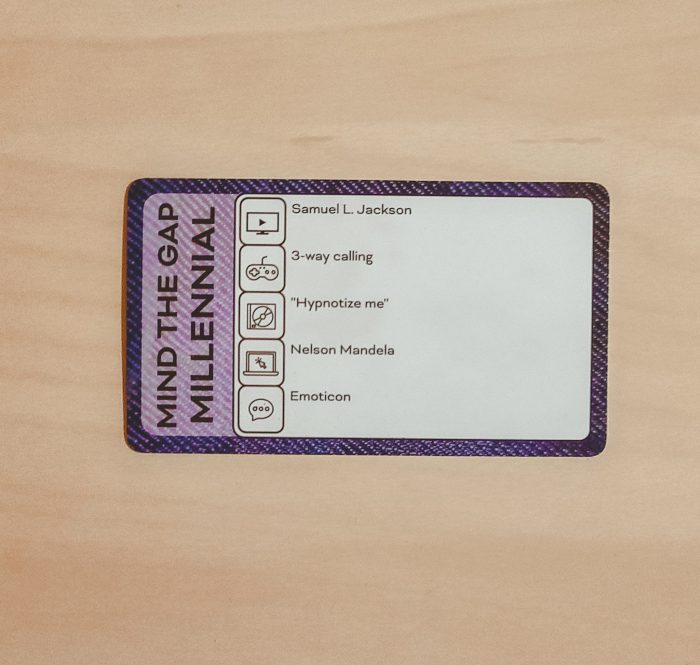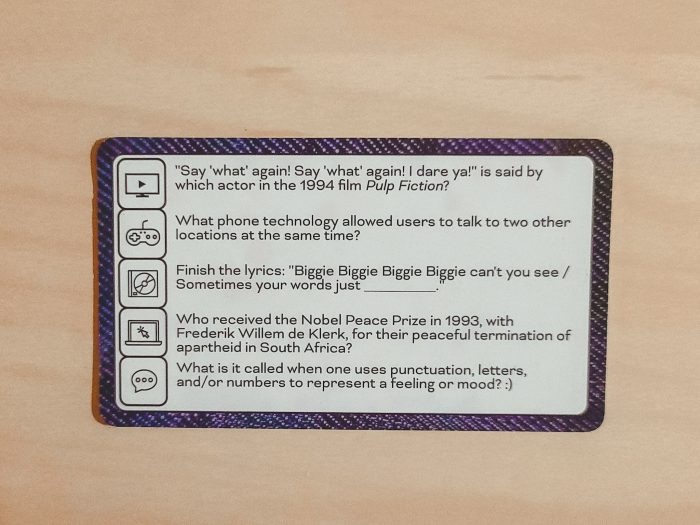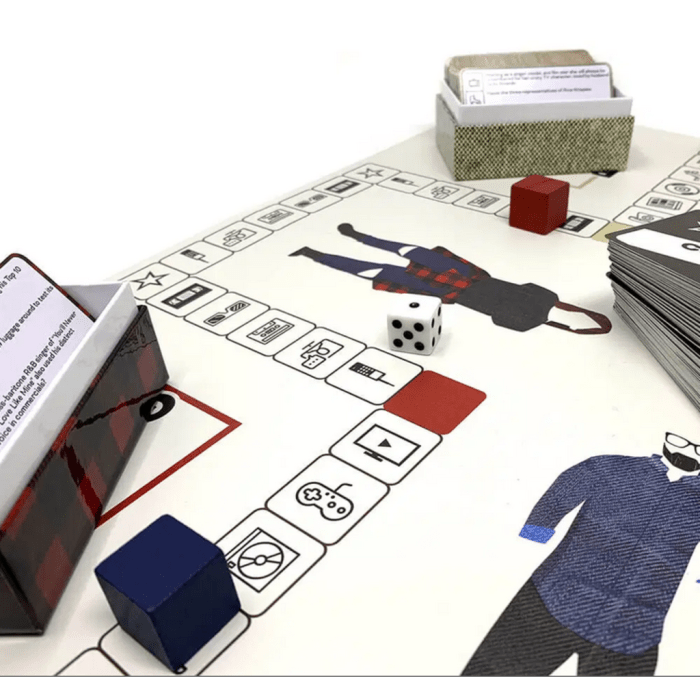Mind the gap trivia questions take you on a journey through the fascinating history, cultural impact, and safety implications of this iconic phrase. Dive into a world of intriguing facts and challenge your knowledge with a mix of easy, medium, and hard questions.
From its origins in public transportation to its witty adaptations in popular culture, the phrase “mind the gap” has left an indelible mark on our collective consciousness. This comprehensive guide explores the nuances, variations, and global perspectives surrounding this beloved expression.
Trivia Questions
Mind the gap is a phrase commonly heard in public transportation systems, particularly in London, to alert passengers of the space between the train and the platform. Here are 10 trivia questions related to this phrase:
Easy
- The phrase “mind the gap” was first used in London’s Underground in the year 1968.
- The voice that announces “mind the gap” on the London Underground is that of actor and broadcaster Peter Purves.
- The gap between the train and the platform on the London Underground can be as wide as 10 inches (25 cm).
Medium
- The “mind the gap” announcement is also used in other cities around the world, including New York City, Paris, and Tokyo.
- The phrase “mind the gap” has been used in popular culture, including in songs, movies, and TV shows.
- The gap between the train and the platform is designed to prevent passengers from falling onto the tracks.
Hard
- The London Underground is not the only public transportation system that uses the phrase “mind the gap.” Other systems, such as the Moscow Metro and the Beijing Subway, also use similar announcements.
- The gap between the train and the platform can vary depending on the type of train and the station.
- The phrase “mind the gap” is often used as a metaphor for other situations in life where there is a potential for danger or risk.
Historical Context
The phrase “mind the gap” has a rich history, originating from the early days of public transportation.
When railways were first introduced, there was often a significant gap between the train and the platform. This gap posed a safety hazard, especially for passengers who were not familiar with the system. To address this issue, railway workers would shout “mind the gap” as a warning to passengers to be cautious when boarding or disembarking trains.
Significance in Public Transportation
Over time, “mind the gap” became a widely recognized phrase in the context of public transportation. It is used to alert passengers to potential hazards, such as gaps between trains and platforms, or between buses and curbs. The phrase serves as a reminder to passengers to be aware of their surroundings and to take necessary precautions for their safety.
Historical Examples
- In the early 1900s, the phrase “mind the gap” was prominently displayed on signs in railway stations and on the sides of trains.
- During World War II, the phrase was used in public announcements to remind people to be careful when entering and exiting air raid shelters.
- In the 1960s, the phrase was popularized in the United Kingdom by a series of television advertisements for London Underground.
Cultural Impact: Mind The Gap Trivia Questions

The phrase “mind the gap” has become a ubiquitous part of popular culture, transcending its original transportation context and resonating with people from all walks of life.
In Popular Culture
The phrase has been referenced in numerous movies, TV shows, and music. For example, in the popular 1980s British sitcom “Only Fools and Horses,” the character Del Boy often used the phrase as a humorous way to warn people about potential pitfalls.
In the 2003 film “Lost in Translation,” the phrase is used as a metaphor for the cultural and emotional divide between the film’s two main characters.
Humor and Social Commentary
The phrase has also been used to convey humor or make social commentary. For instance, in the 1990s, a popular T-shirt featured the phrase “Mind the Gap: Between the Rich and the Poor,” highlighting the growing income inequality in many countries.
Variations and Adaptations

The phrase “mind the gap” has undergone numerous variations and adaptations over time, reflecting its widespread use in different contexts.
One common variation is the use of “mind the step” or “watch your step” in place of “mind the gap.” This is often seen in situations where there is a small difference in height between two surfaces, such as when stepping off a curb or entering a building.
Humorous Uses
The phrase “mind the gap” has also been subject to humorous adaptations and parodies. For example, the phrase “mind the flap” has been used to describe the gap between a person’s teeth.
Safety Implications

The phrase “mind the gap” serves as a crucial safety warning in public transportation systems. It alerts passengers to the potential hazard of gaps between platforms and trains, preventing accidents and injuries.
Importance of Adhering to Safety Guidelines
Ignoring safety guidelines when encountering gaps can have severe consequences. Stepping into the gap or attempting to cross it while a train is approaching can lead to slips, falls, and collisions with the train. It is essential to pay attention to the warning and wait until the train has come to a complete stop before crossing the gap.
Accessibility Considerations

The phrase “mind the gap” serves as a crucial safety reminder in public transportation systems, alerting passengers to the potential hazard of stepping into the gap between the train and the platform. However, this phrase may pose accessibility challenges for individuals with disabilities or visual impairments.
For individuals with visual impairments, the phrase “mind the gap” may not be easily discernible, especially if it is not accompanied by visual cues such as tactile paving or auditory announcements. This can lead to confusion and increased risk of accidents.
Mind the gap trivia questions can be tricky, but they’re also a lot of fun. If you’re looking for a challenge, try your hand at some of the more obscure questions, like the figur in der zerbrochene krug . This German play by Heinrich von Kleist is full of interesting characters and plot twists, so it’s sure to provide some challenging trivia questions.
Once you’ve mastered the obscure questions, you can move on to the more mainstream ones. But no matter what your level of trivia expertise, you’re sure to have a good time testing your knowledge with mind the gap trivia questions.
Improving Accessibility
To improve accessibility, public transportation systems can implement various measures:
- Tactile paving:Installing tactile paving at the edge of platforms provides a tactile cue that alerts individuals with visual impairments to the presence of the gap.
- Auditory announcements:Clear and concise auditory announcements can provide verbal cues about the gap, ensuring that individuals with visual impairments are aware of the potential hazard.
- Visual signage:High-contrast visual signage can enhance visibility and make the phrase “mind the gap” more easily noticeable.
- Staff assistance:Providing trained staff to assist individuals with disabilities or visual impairments can ensure their safe passage through the gap.
By implementing these accessibility measures, public transportation systems can create a more inclusive and equitable environment for all users.
Design and Technology

The issue of platform gaps in public transportation systems has been addressed through advancements in design and technology. These innovations aim to enhance safety and accessibility, improving the overall transportation experience.
One significant technological advancement is the implementation of platform edge doors. These doors align with the train doors, creating a physical barrier between the platform and the tracks. This effectively eliminates the gap, preventing falls and accidents.
Another important development is tactile paving. These textured surfaces on the platform edge provide tactile cues to visually impaired or blind individuals. The distinct pattern helps them identify the edge of the platform, reducing the risk of stepping into the gap.
Automated announcementsalso play a crucial role in bridging the gap. They provide clear and concise information about the arriving train, its destination, and any potential hazards. This information helps passengers make informed decisions and navigate the platform safely.
Role of Technology in Bridging the Gap
Technology has revolutionized the way we address platform gaps. It has enabled the development of innovative solutions that enhance safety and accessibility. These advancements have improved the overall transportation experience, making public transportation more inclusive and efficient.
Global Perspectives

The phrase “mind the gap” has transcended its original context and has become a part of the global lexicon, with variations and interpretations that reflect the cultural nuances of different countries and regions.
In the United Kingdom, where the phrase originated, it is primarily associated with public transportation, particularly the London Underground. It serves as a warning to passengers to be aware of the space between the train and the platform edge to avoid accidents.
However, the phrase has also been adopted in other countries, often with a broader meaning.
Cultural Nuances and Variations, Mind the gap trivia questions
- In Japan, the phrase “gochisousama deshita” (literally, “it was a delicious meal”) is used at the end of a meal to express gratitude for the food and the company. It serves a similar function to “mind the gap” in that it is a polite and respectful way to acknowledge the end of an experience.
- In India, the phrase “namaste” is a traditional greeting that is often accompanied by a slight bow. It conveys respect, humility, and a sense of connection, similar to the way “mind the gap” acknowledges the shared space between passengers and train operators.
- In Brazil, the phrase “bom dia” (good morning) is not only used as a greeting but also as a way to acknowledge someone’s presence or to politely interrupt a conversation. It reflects the Brazilian culture’s emphasis on warmth and friendliness.
Q&A
Where did the phrase “mind the gap” originate?
It originated in the London Underground in the early 1960s to warn passengers of the gap between the train and the platform edge.
What is the significance of the phrase in the context of public transportation?
It serves as a safety warning, reminding passengers to be cautious when stepping onto or off trains to avoid falling into the gap.
How has the phrase been used in popular culture?
It has been referenced in movies, TV shows, and music, often with humorous or ironic intent to convey social commentary.